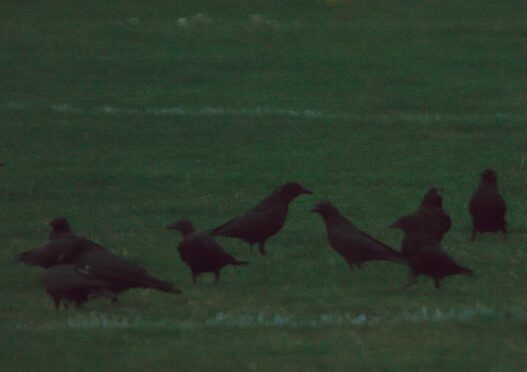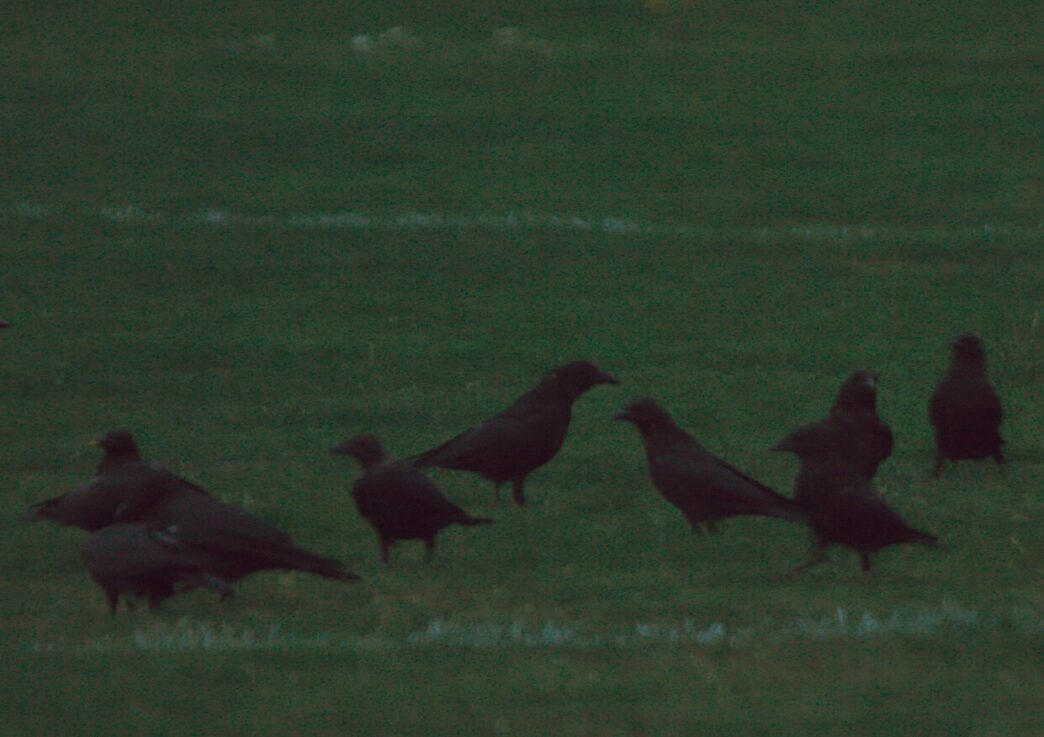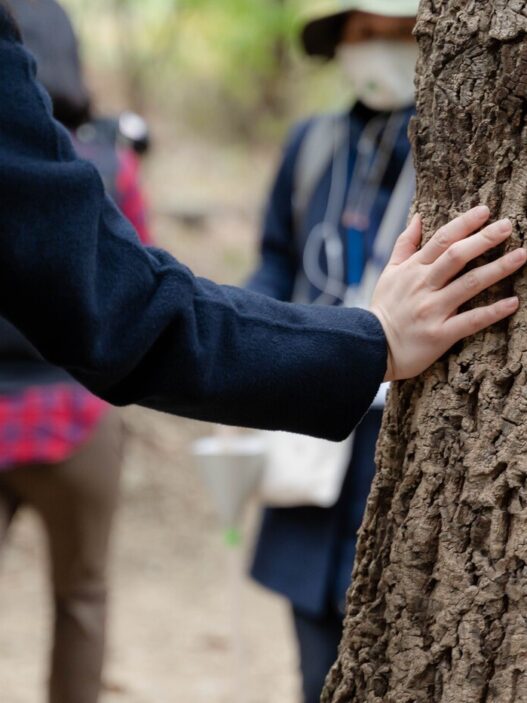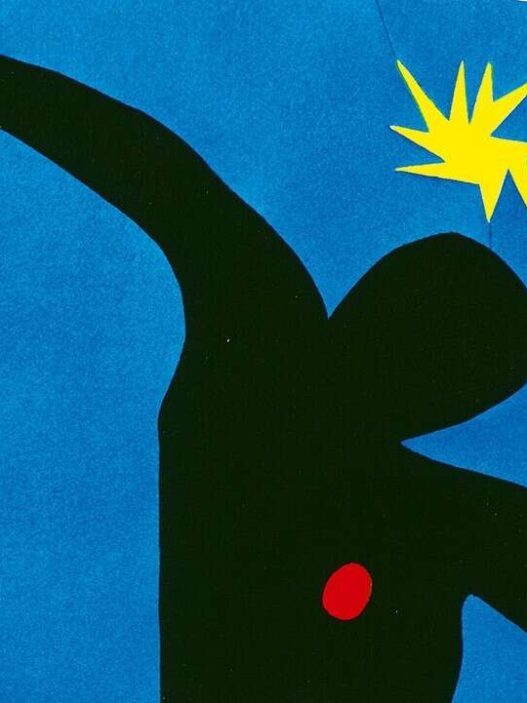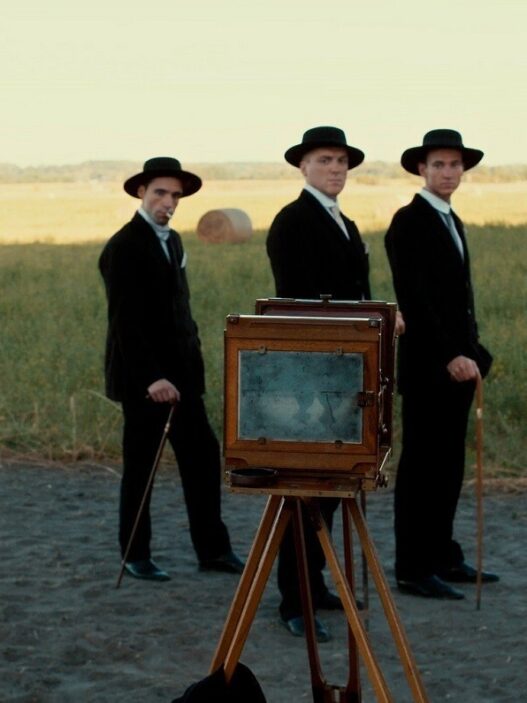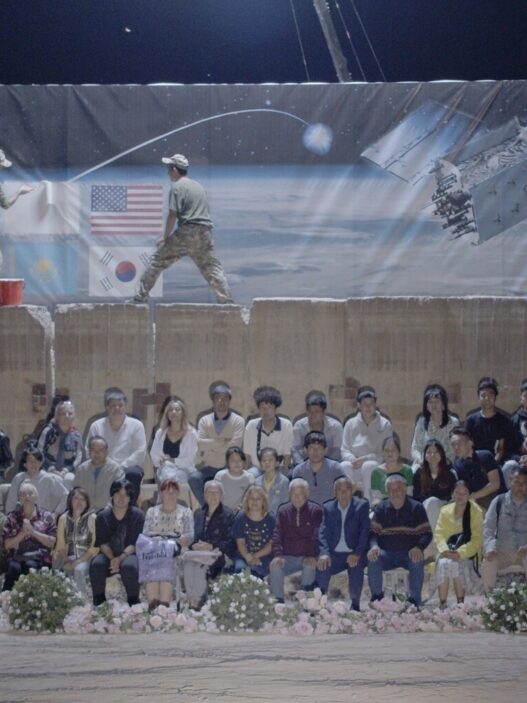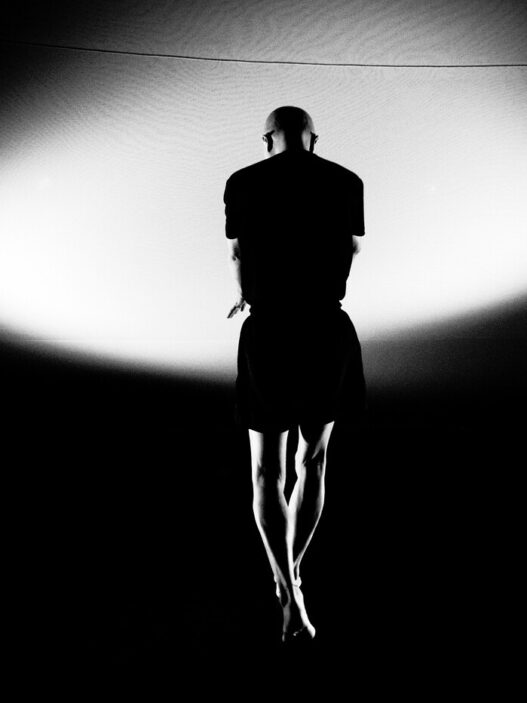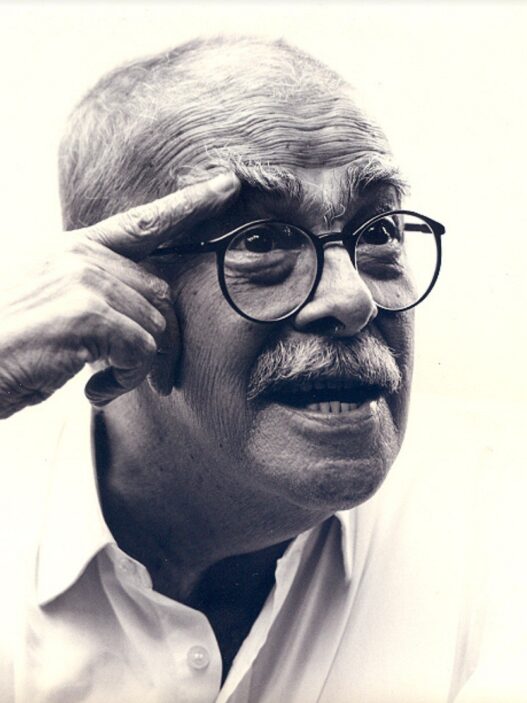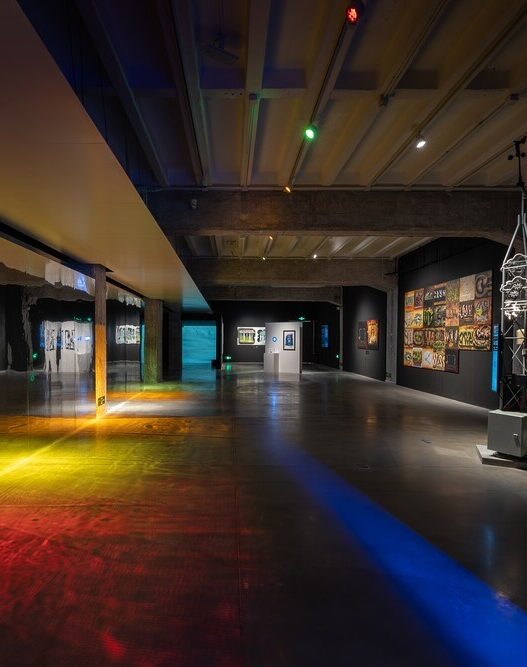Secession presents Jean-Frédéric Schnyder, The Otolith Group: What the Owl Knows and Patricia L. Boyd: Ceiling Analysis from November 19, 2022 to February 5, 2023.
Jean-Frédéric Schnyder
The Swiss artist Jean-Frédéric Schnyder exhibits a cross-section of his work over nearly forty years at the Secession (1983–2021). The 102 paintings of various formats (all: oil on canvas) are hung evenly spaced and create a horizontal line, increasing in size from front to rear and then reducing again. The concept includes the ever-changing live image of the outdoor space revealed by the glass door on the front wall.
Schnyder has been producing paintings, photography, sculptures, objects, and installations since the late 1960s. In his creative practice, he maintains a radical openness, which has resulted in a vastly diverse body of work. Looking at Schnyder’s painterly work since the early 1970s, however, one finds a remarkable consistency as well as breaks in equal measure.
Schnyder bases his ideas and motifs on existing and popular practices, playing them consistently and expertly through—for example, still life, nudity, and landscape, the three most common motifs in art history—while the works remain aesthetically diverse. Rather of upholding the romanticized stereotype of Swiss Alpine imagery, it represents images of humanly cultivated, self-made landscape, such as when highways and roads are prominent. In his workshop, the artist employs figurative-abstract motifs and styles. For a series of flower paintings—another iconic motif—he employs a pixel system reminiscent of early digital aesthetics as well as early twentieth-century color field painting.
The artist frequently creates sculptural pieces out of common things and scrap materials. For example, the 1971 piece Empire State Building is made of Lego blocks, chewing gum, and a secret light source. (Banana) boxes that were previously used as moving cartons are recycled as well, particularly the parts with specified punched-out handles. The artist meticulously adheres these together using brown paper tape to create new things, such as the one shown in the exhibition, Durchbrochen (2015). Käfig (2008), the second object in the exhibition, is a hollow space constructed from the branches of a hazelnut tree that serves as a counter-object to the same sculptural concept.
Jean-Frédéric Schnyder, born 1945 in Basel, lives and works in Zug, Switzerland.
The Otolith Group: What the Owl Knows
What the Owl Knows is a meeting of artists through a meeting of media. In the summer of 2022, a computer study of a painter at work in a studio somewhere in London. Concentration, consideration, and contemplation are used to examine decision, determination, and deliberation. What the Owl Knows is concerned with the quality of attention bestowed upon the paint by the painter rather than the motivations for the work of painting. It urges viewers to pay attention to how video pays attention to how a painter pays attention to what she paints.
The Otolith Group’s Kodwo Eshun and Anjalika Sagar are the artists. Lynette Yiadom-Boakye is the artist. What the Owl Knows is the result of a long friendship. A reciprocal adoration between three Londoners that serves as a prerequisite for establishing a link between immanence, intensity, and reflection. What the Owl Knows’ patience, presence, and tenacity result in a high-resolution oblique study of London. A painter’s attentiveness elevates the language of painting to a vital point of current significance, capturing a crisis-ridden London.
Anjalika Sagar and Kodwo Eshun formed the Otolith Group in 2002. Eshun and Sagar’s post-cinematic practice is informed by an essayistic aesthetics that takes the form of a science fiction of the present in which moving images, sonic speculations, performances, publications, and installations investigate the interscalar catastrophes that comprise the Racial Ca pitalocene.The Otolith Group has recently exhibited at the Irish Museum of Modern Art in Dublin, the Sharjah Art Foundation in Sharjah, the Guggenheim Museum in Bilbao, the Tate Britain in London, the Haus der Kulturen der Welt in Berlin, the Carnegie International, 57th Edition in Pittsburgh, and the Rubin Museum of Art in New York.
Patricia L. Boyd: Ceiling Analysis
Patricia L. Boyd’s first institutional solo exhibition in Austria, Ceiling Analysis, features freshly commissioned pieces. The central piece is a massive sculpture dangling from the Grafisches Kabinett’s ceiling, considerably lowering the gallery’s already low ceiling. The sculpture is the same length and width as the ceiling in Boyd’s New York psychoanalyst’s office.
Ceiling Analysis arose from an investigation of the interdependence of what we refer to as “external” and “interior” factors (including all the various permutations of what those words can mean). It is a response to the architecture of the gallery in which it is displayed, as well as a metaphor for the formation of an interior mental space. Boyd’s show is based on her observations of the tilted, horizontal stance she assumes as an analyte hour after hour, week after week. What happens when we abandon our upright, standing stance, which is bound to a hierarchical cognitive structure?
Boyd’s work includes sculpture, photography, writing, and video. It is frequently distinguished by the display of the negative through inversions, elisions, and deletions.
Patricia L. Boyd lives and works in London.
Secession
Friedrichstraße 12
1010 Vienna
Austria
presse@secession.at









